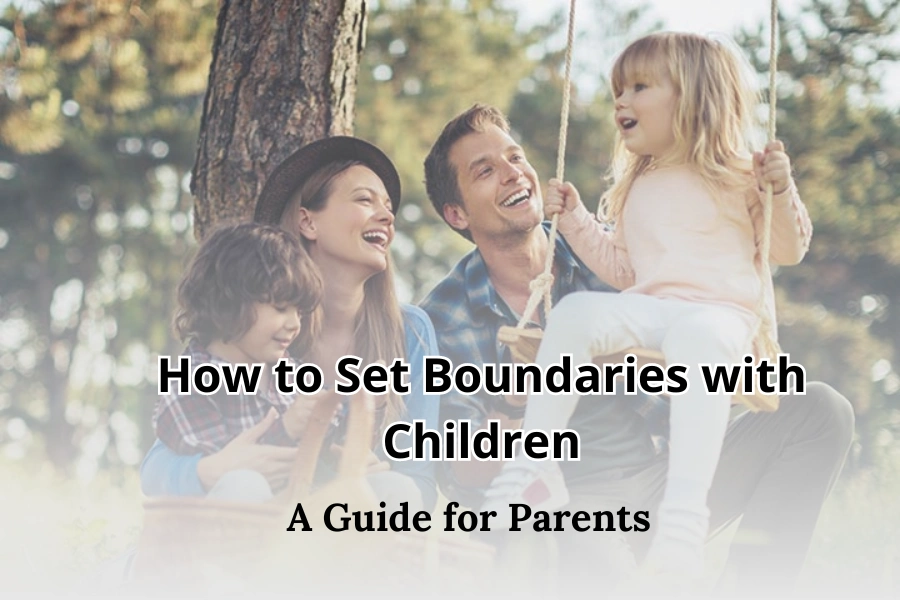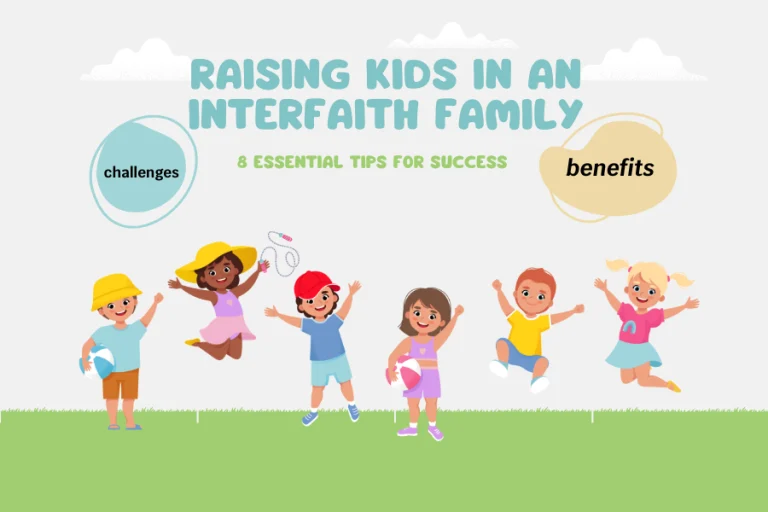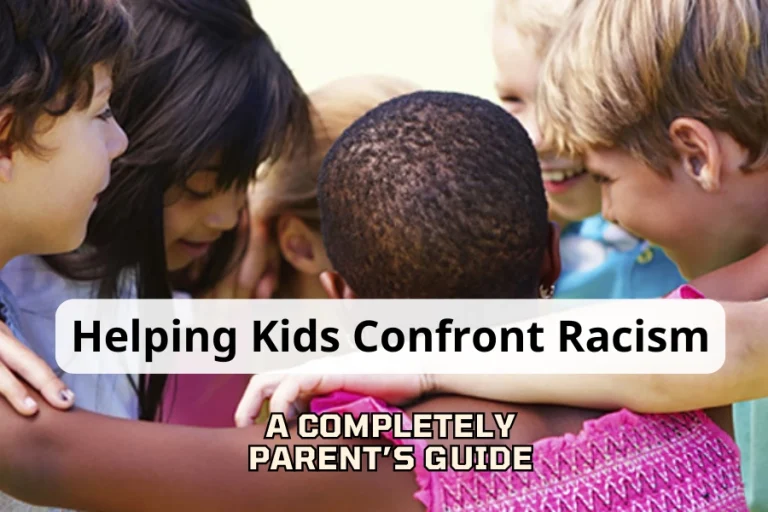
Education isn’t about memorizing facts; it’s about teaching kids to think for themselves.
Albert Einstein wisely noted
But does that mean we should let our children run free without any boundaries? Have you ever felt like your child’s demands are too much to handle? Or struggled to teach them right from wrong?
While it’s important to love our children unconditionally, there’s a fine line between love and spoiling. Pampering our kids too much can have unintended negative consequences down the road. Today, BabiesParent is here to help you how to set boundaries with children. We’ll explore the importance of setting boundaries for your children and provide practical tips on how to do it effectively.
What are Boundaries?
Before we delve into the methods of how to set boundaries with children, it’s important to understand what boundaries actually are. You’ve probably heard the term “setting healthy boundaries” many times, but what does it really mean, and how does it contribute to a child’s development?
Boundaries are imperceptible lines that indicate the bounds of appropriate conduct in a parent-child relationship. These boundaries serve as guidelines for children, helping them engage in appropriate actions and interactions. They also offer a structure for creating healthy relationships with others. In simpler terms, boundaries help young children differentiate between right and wrong in social contexts.
Within a family relationship, boundaries can be categorized into two aspects: physical boundaries and emotional boundaries. Physical boundaries include sharing common areas, giving others space, and using acceptable touch. Emotional boundaries, on the other hand, create a healthy communication environment to understand and share feelings.
The Importance of Boundaries for Children’s Development
So, why is it crucial to know how to set boundaries with children? Or what are the benefits of setting good boundaries with your kids? As mentioned earlier, establishing boundaries creates a framework that helps children differentiate between right and wrong.
The point is to differentiate between setting boundaries and control. Setting boundaries isn’t about control; it’s really about creating a safe space in which children have leeway to explore the world. Well, imagine boundaries as a safety net. They keep kids safe while giving them the freedom to explore and grow.
Healthy boundaries are what help young children build their brains, develop good mental health, and even set the basis for good manners. A child has been called a little sponge because whatever they are surrounded by gets absorbed into their minds.
Parents can set the path for every child in how they will create behavior that fits into their lives. This helps the development of self-confidence, empathy, and responsibility within themselves. This builds independence in the child, hence good behavior in later life.

How to Set Boundaries with Children: 5 Rules to Follow
Setting a good boundary can yield numerous benefits for your child’s development. How to set boundaries with children properly? To establish boundaries properly, it is advisable to adhere to the following five rules:
Boundaries Aren’t Meant to Be Punishments
Firstly, it is crucial to remember that boundaries are not meant for punishment. The purpose of setting boundaries is to provide a framework for teaching and positively shaping a child’s character. Instead of using boundaries as a form of punishment, they should be used to encourage positive behaviors.
Rather than focusing on restrictions, boundaries should be viewed as effective tools for teaching children how to behave appropriately. Shifting your perspective on boundaries will help you approach the task of setting them more effectively. Instead of focusing on punishment, use rewards to encourage desired behaviors. Offer praise when your child complies and provide clear explanations about expectations.
Avoid Using Boundaries to Control Your Child
The second, and perhaps most important, rule of how to set boundaries with children is that boundaries are not about control. The aim of setting boundaries is to shape a child’s behavior, not to control it.
If boundaries become overly restrictive, children may develop a rebellious attitude or resentment. And of course, that is unpleasant for everyone involved, both parent and child. Excessive control over a child can lead to dysregulated behavior. You should allow your child to make decisions and engage in behaviors within the established boundaries. This will help them develop autonomy and responsibility.
Reflect on Your Approach Before Enforcing Boundaries
Thirdly, boundaries should not only be applied to children but should also be reflected in the parent’s behavior. Parents should not be exempt from the boundaries they establish.
Setting boundaries involves not just your child but also yourself. It’s essential to understand your own motivations and emotional state before setting or enforcing limits. Avoid blaming your child for your frustrations or anxieties. Be mindful of your own boundaries and communicate them effectively to your child to create a mutually respectful environment.
Establish Limits and Understand the Underlying Need
The next important rule in how to set boundaries with children is that limits need to be clearly stated, consistent, and appropriate to the age of the child. While setting limits, consider your child’s age, developmental stage, and individual personality. Remember, one size does not fit all. Adjust your limits to your child and the unique needs of your family.
If your child consistently crosses boundaries, try to understand the underlying need or reason behind their behavior. Addressing the root cause can help prevent future conflicts and make setting boundaries more effective.

Show Empathy and Clarify the Reason Behind the Rules
The final rule in how to set boundaries with children is to acknowledge your child’s feelings and perspectives. Let them know that you are always willing to listen and understand their desires or frustrations. This helps children feel respected and heard, rather than controlled by their parents.
You should also explain the reasons behind the set boundaries. Use simple words that the child will understand, giving relevant examples from day-to-day experiences of why such limits must exist. Allow the child to express their view and feelings without being judgmental. This rule ensures mutual respect and encourages children to comply with boundaries voluntarily.
Different Ways and Scenarios of Setting Boundaries
To gain a deeper understanding of how to set boundaries with children, let’s explore various scenarios and specific implementation methods.
Physical Boundaries
Teaching kids about personal space is super important, especially if you have multiple children. It teaches kids to be considerate of one another and share. Plus, it sets them up for success as they get older.
A good place to start is with playtime. You can say things like, “Your little brother doesn’t like playing with dolls right now, let’s respect that.” Or, “Let’s play in the sand, but please don’t throw it at me.” These are easy ways to start setting boundaries. Ensure that the family as a whole abides by these guidelines.
Managing Screen Time with Age-Appropriate Boundaries
We live in a world that’s always online. Our daily activities are intertwined with digital technology. Our children will grow up in a world dominated by screens, from entertainment and learning to social interactions. Setting limits on screen time is therefore essential.
How to set boundaries with children effectively in the digital age? You should try to find ways to “disconnect” your children from screens and expand their imagination. Instead of playing video games, you can play Lego, color books, or cook with your children. It will also help the kids to be outside the “virtual world” and get tuned more to the real one.
With every instance of participation in age-specific physical and imaginative activities, children learn and grow in so many ways. Plus, it’s healthier for them to spend less time looking at screens.

Mealtimes and Bedtimes
Eating and sleeping might seem like no big deal, but setting boundaries around these things can really help your kids. BabiesParent understands that every child will feel hungry and tired after a long day at school. However, it’s important to set limits for your child, even in these simple routines.
Consistent boundaries in these small habits will foster cooperation and promote better behaviors. How to set boundaries with children at mealtimes and bedtimes? You can convey expectations about mealtime or bedtime by saying, “You can play until 9, then it’s bedtime” or “You can have candy, but only three times a week.”
Boundaries in these routines help ensure proper nutrition and a regular sleep schedule. Be clear and consistent when enforcing these boundaries for better results.
Positive Reinforcement
Another important aspect of how to set boundaries with children is to consistently reinforce and acknowledge their positive behaviors. Positive reinforcement helps children feel valued and more willing to comply with boundaries.
You can offer specific praise when your child adheres to the boundaries, such as “Thank you for helping me fold the laundry. You’re a very helpful folder.” Specific praise, rather than a general “good job,” helps children understand that their behavior is valued and encourages them to repeat it. This approach makes setting boundaries easier and motivates children to participate more.
FAQs
To help you set boundaries with a disrespectful youngster, consider the following ideas:
– Trying to understand your child’s disrespectful behavior.
– Mentioning to them why what they do isn’t okay
– Showing them what respectful behavior looks like.
– Remind them of those times when they were really respectful.
– Not letting them get away with being disrespectful.
Establishing boundaries is not easy. Therefore, you can follow this golden rule: Treat others the way you want to be treated. This will help you set and follow boundaries more easily.
These boundaries typically fall into specific categories: emotional (protecting emotional well-being), physical (protecting physical space), and sexual (protecting sexual needs and safety).
Final Word from BabiesParent
To make boundary setting more effective, consistency is key. Once you’ve established rules, stick to them. Additionally, take the time to talk to your children about these rules, listen to their perspectives, and explain why the rules are important.
Setting boundaries is a long-term process that requires patience from parents. However, the benefits are immense. Through this article, we’ve explored how to set boundaries with children, the significance of boundaries, the different types of boundaries, and their positive impact on child development. Remember, setting boundaries is not about limiting your child but is a valuable gift that helps them grow into independent individuals.






